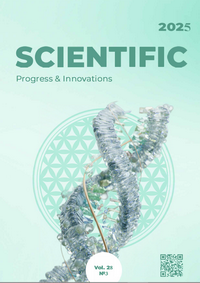The effect of chemical and biological agents on chickpea (Cicer arietinum L.) disease development in the Forest-Steppe of Ukraine
DOI:
https://doi.org/10.31210/spi2025.28.03.04Keywords:
phytopathogens, Alternaria, Fusarium, Ascochyta, Botrytis, integrated protection, seed materialAbstract
Chickpea is a promising crop for cultivation in the Forest-Steppe of Ukraine; however, its productivity is limited by phytopathogenic infections. The aim of the study was to assess the species composition of phytopathogenic microflora and the effectiveness of chemical and biological protection against major chickpea pathogens under the conditions of the Forest-Steppe of Ukraine. The research was carried out in 2023 and 2024 on experimental plots in Myrhorod District, Poltava Region using two chickpea varieties – Zehavit and Kira. The results identified the phytopathogenic microflora associated with chickpea, including Ascochyta rabiei, Fusarium oxysporum, Botrytis cinerea, Alternaria alternata, Rhizoctonia solani, and Pythium ultimum. The analysis of their spread dynamics showed an increase in the frequency of seed infection in 2024 compared to 2023, correlating with a lower hydrothermal coefficient and moisture deficit during the spring period. The Kira variety demonstrated higher resistance to the complex of phytopathogens compared to Zehavit, which was confirmed by lower prevalence and disease intensity. The highest infection rates were associated with Ascochyta rabiei and Alternaria alternata, requiring particular attention when developing protection schemes. The use of chemical seed treatments effectively suppressed pathogen development, while the combination of Maxim Advance with the biofungicide Trichodermin provided the highest biological efficacy (81.2–86.8 %), surpassing both chemical and biological agents used individually. These findings confirm the feasibility of using integrated protection schemes to improve the phytosanitary condition of chickpea crops. The obtained results can serve as a basis for developing practical recommendations for protecting chickpea against seed-borne and soil-borne infections under the agroecological conditions of the Poltava region, taking into account varietal characteristics and climatic factors.
Downloads
Published
How to Cite
Issue
Section
License
Copyright (c) 2025 Scientific Progress & Innovations

This work is licensed under a Creative Commons Attribution 4.0 International License.

 Creative Commons Attribution 4.0 International Licens
Creative Commons Attribution 4.0 International Licens